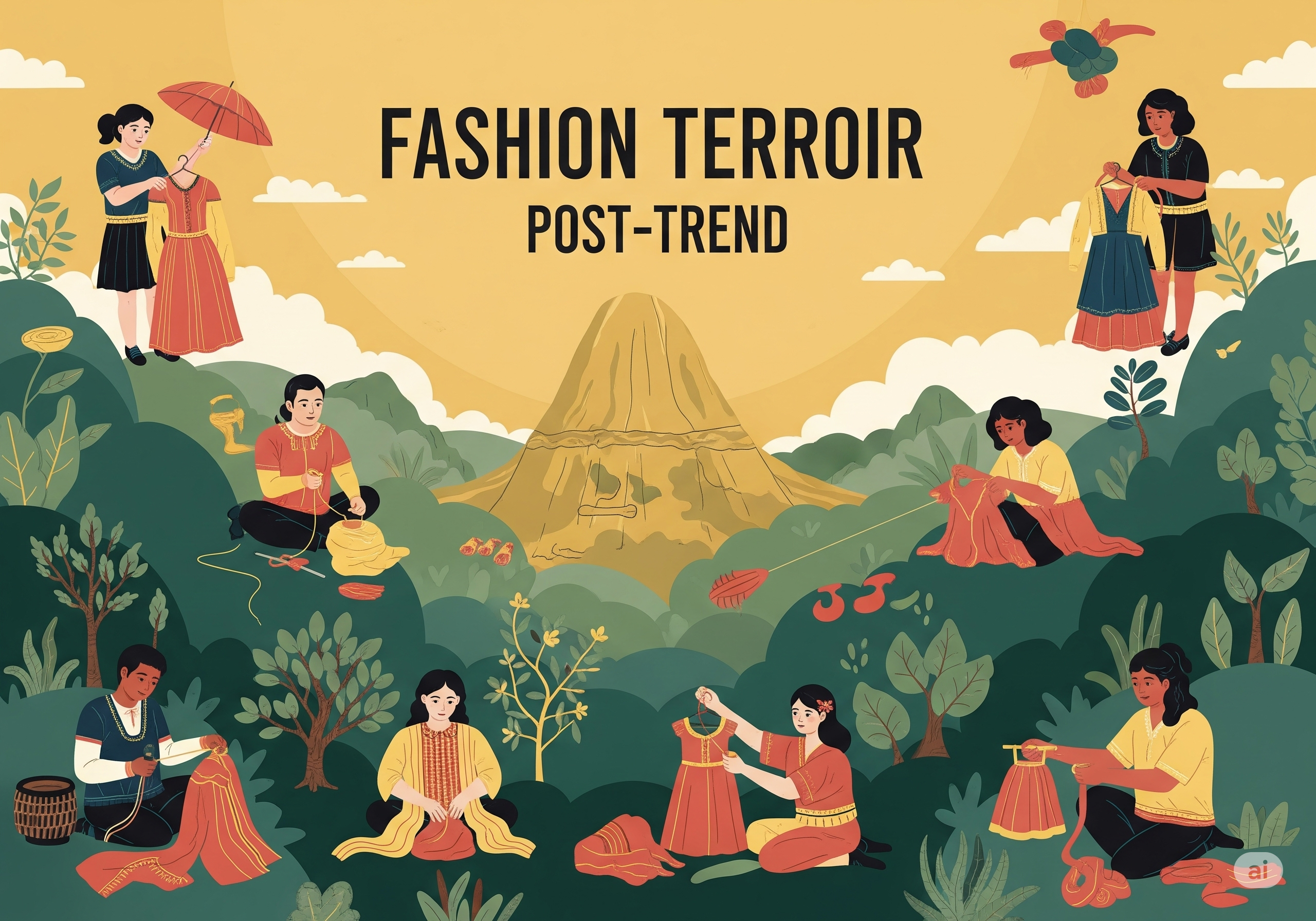

What is Fashion Terroir? A Guide to the New Luxury Trend
The Quiet Revolution: Why “Fashion Terroir” is the New Status Symbol
Luxury once spoke with a universal voice, its logos a global language understood from the Parisian catwalks to Tokyo’s bustling shopping districts. But as we move into the mid-2020s, a quiet, more profound revolution is taking place. The roar of the brand is being replaced by the whisper of the region.
Welcome to the age of Fashion Terroir, a concept that is redefining luxury from the ground up.
What is Fashion Terroir?
Borrowed from the world of wine, “terroir” describes the unique environmental factors—soil, climate, and geography—that give a wine its distinct character. In fashion, Fashion Terroir is the idea that a garment’s true value lies not in a designer’s logo, but in its geographical and cultural origin. It’s a fundamental shift from asking, “Who are you wearing?” The conversation moves to a more meaningful question: “From where does your clothing originate?”
This significant shift is a direct result of a post-trend society where shoppers are tired of fast fashion and an overwhelming number of identical items. They are no longer seeking a name; they are seeking a story, an origin, and a piece of history.
From Global Megatrends to Regional Narratives
This season’s collections from major international fashion houses reveal a surprising new axis. Instead of a single, overarching trend—like “Barbiecore” or “quiet luxury”—we are seeing a deliberate celebration of regional craftsmanship and heritage. A prominent Milanese brand might now feature intricate lacework from a small village in Cyprus, highlighting the artistry of a tradition passed down through generations. Similarly, a New York designer might build an entire collection around a specific type of recycled seagrass cloth from coastal Maine, telling a story of sustainability and local ingenuity.
The new focus is on traceability, authenticity, and narrative. Consumers are no longer just buying a jacket; they are buying a piece of the Scottish Highlands, woven from the wool of a specific flock of sheep. They are not simply purchasing a dress; they are investing in a pattern-making tradition that has been passed down for centuries in a village in Rajasthan.
A Case Study: The Re-emergence of Indian Craft
This trend is particularly dynamic and alive in India. For years, the incredible diversity and richness of Indian textiles were often oversimplified for a global audience. In the present day, companies are acknowledging the immense worth of this legacy. They are partnering with artisan communities to bring traditional techniques like chikankari embroidery from Lucknow, bandhani tie-dye from Gujarat, or kalamkari hand-painting from Andhra Pradesh to the forefront.
This is not a fleeting trend but a genuine revival, supported by consumers who are passionate about ethical fashion and sustainable luxury. These buyers are willing to pay a premium for a product that tells a transparent story of its creation, from the raw materials to the skilled hands that crafted it.
The Future of Fashion is Local
The shift to fashion terroir signifies a new era for luxury. It’s a movement that champions artisans over assembly lines, heritage over hype, and stories over slogans. As consumers continue to prioritize meaningful consumption, the most coveted status symbol will no longer be a recognizable logo, but the authentic, whispered tale of a garment’s journey from a specific place on Earth to your wardrobe.
Table of Contents
Get real-time information—only on TajaExpress.






